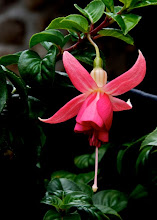
The Jaguar, Feline of the Peruvian Rain Forest
The Amazon River was named as one of the New Seven World Wonders of Nature list in the forests, national parks and nature reserves category.
The Amazon River is the largest river of the world and its basin is also the largest drainage basin of the planet; since, it covers an area of 6 475 000 square kilometers (2500 000 square miles) in Peru, Brazil, Ecuador Colombia, Venezuela and Bolivia.
The Amazon River releases an impressive quantity of water into the Atlantic Ocean, around 300 000 cubic meters per second. Because of this flood, the Amazon is the source of the 20% of the total volume of fresh water of the planet’s Oceans.
The Amazon River basin supports also the most important biodiversity ecosystem of the world, the Amazonian Rain Forest, which is the home of around 70% of all known plant and animal species of the planet, including 300 species of mammals, 1700 species of birds, 3000 species of freshwater fish and trees as well as millions of insects, including 4000 species of butterflies. It highlights species such as the jaguars, macaws, piranhas, toucans, anacondas, turtles, snakes, alligators and many more.
Pacaya Samiria National Reserve
The Peruvian Government declared the Pacaya and Samiria River Basin as a Reserved zone in 1940 in order to protect the largest fish in the Amazon river system.
In 1982 Pacaya Samiria was declared as National Reserve. It was created to conserve the species of plants and animal wildlife.
Four different types of forests are found here, and a great variety of species of plants, such as Lupuna (Chorisia insignis), renaco (Ficus anthelmintica), caoba or mahogany (Swietenia macrophylla); orchids such as mosses, lichen, Elleamthus aurantiaca; Palm trees, such as Mauritius Palm or Aguaje (Mauritia flexuosa), yarina (Phytelephas yarina).
In Pacaya Samiria there are more than One hundred thirty two species of reptiles, one hundred thirty types of mammals, more than three hundred species of birds, countless numbers of amphibians, and huge variety of fish species that are the main source of protein for the local population.
Many endangered species are found in this National Reserve such as the Black spider monkey (Ateles paniscus), wooly monkey (Lagothrix lagotricha), red howler monkey (Alouata seniculus), the pink river dolphin (Inia geoffrensis), the gray estuarine dolphin (Sotalia fluviatilis), two species of turtles: Taricaya (Podocnemis unfillis), giant charapa (Podocnemis expansa), manatees (Trichechus inunguis), giant otters (Pteronura brasiliensis), and the black cayman (Melanosuchus niger).
A large variety of fish species that can be found here, such as: the world's largest fresh - water fish (Paiche arapaima gigas) , weighing four hundred pounds, and about three meters long: Pacu (Myleus setiger) thirty pounds, gamitana (Colossoma bidens) one hundred twelve pounds, tucunare (Cichla Ocellaris) eight to ten pounds, and acarahuasu (Astronotus ocellatus) three to five pounds.
Within the group of mammals, we can find the most common felines , the jaguar (Panthera onca), ocelot (Leopardis pardalis) and margay (Leopardus wiedii). The most abundant type of mammals are the rodents, an example of these are the ronsoco or capybara (Hydrochoerus hydrochaeris).
Finally, we find in Pacaya Samiria a great variety of birds species such as: toucan (Ramphastos cuvieri), blue and yellow macaw (Ara ararauna), tabaquero (Pteroglossus castanotis), Scarlet macaw (Ara macao), tuqui-tuqui (Jacana jacana), green hummingbird (Amazilia lactea), among others.
www.veggietours.com
https://twitter.com/#!/veggietours
http://www.facebook.com/veggietours


No comments:
Post a Comment